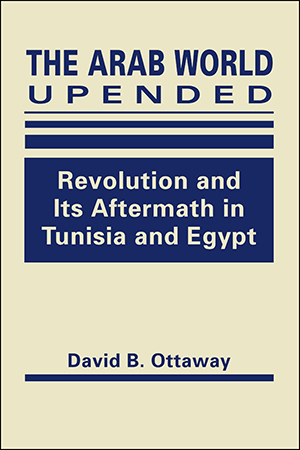
- 2017/269 pages
The Arab World Upended:
Revolution and Its Aftermath in Tunisia and Egypt
Hardcover: $35.00
ISBN: 978-1-62637-620-5
Ebook: $35.00
ISBN: 978-1-62637-631-1
After the autocratic regimes in the seemingly unassailable police states of Tunisia and Egypt suddenly collapsed in 2011, the Islamic parties that took over quickly succumbed in turn to further massive uprisings, this time by disaffected secularists and, in the case of Egypt, with the support of the army. What explains this? And why do the current regimes in both countries remain so fragile?
Addressing these questions, drawing on years of first-hand, in-depth research, David Ottaway explores the causes of the revolutions in Tunisia and Egypt, the reasons for their radically differing outcomes, and the likely trajectory of the two countries’ political development.
Addressing these questions, drawing on years of first-hand, in-depth research, David Ottaway explores the causes of the revolutions in Tunisia and Egypt, the reasons for their radically differing outcomes, and the likely trajectory of the two countries’ political development.





